Here's the message from the ebay seller after I had won:
Of course I'm not giving up a potential part of keyboard history (and if someone is gonna keep it from a museum, it's gonna be meHi, Thank you for your purchase! I will ship your item on Monday. I was contacted by the other bidder that wrote that they would be interested in it if you didn't pay. They said that they made a mistake on bidding and offered $800 for the keyboard if you didn't pay. I told them that you paid very quickly. I also told them that I would pass that information along to you. If you want to sell it to this buyer, please let me know and I will give you their info. If I don't hear anything back from you, I will go ahead and ship on Monday as promised. Thanks again and congratulations!
There is no competition, these are the best linears of any keyboard I have tried. Even the smooth Fujitsu I recently posted, doesn't hold a candle (which is #2). bluesmoke from GeekHack described them as "buttery" when I brought it to the recent Bay Area Meetup.
They are Alps Reed Switches, or "Super Alps" for short because too many of the other magnetic reed switches are crap
Now, the "lighted" keypad on the side uses ultra crappy industrial switches, don't even bother looking them up. They are exceedingly awful.






It might be hard to tell, but all the letters (and APL) are "doubleshot engraved", while Shift Lock is true doubleshot. I spent hours cleaning out the engravings...


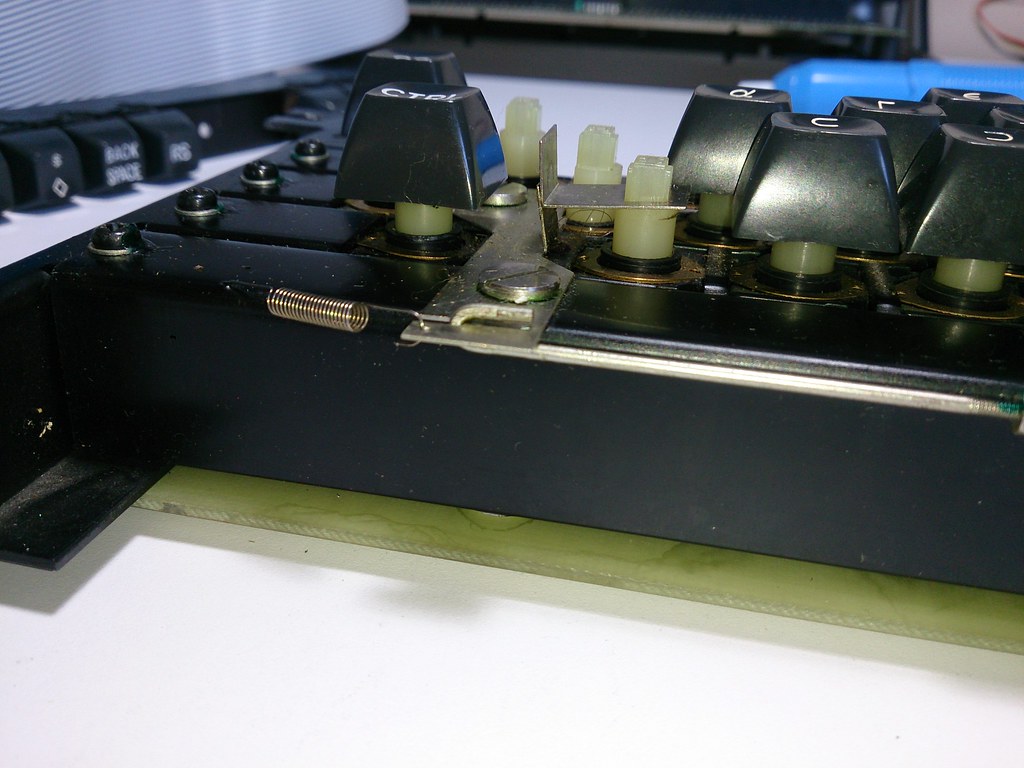


Shift Lock mechanism
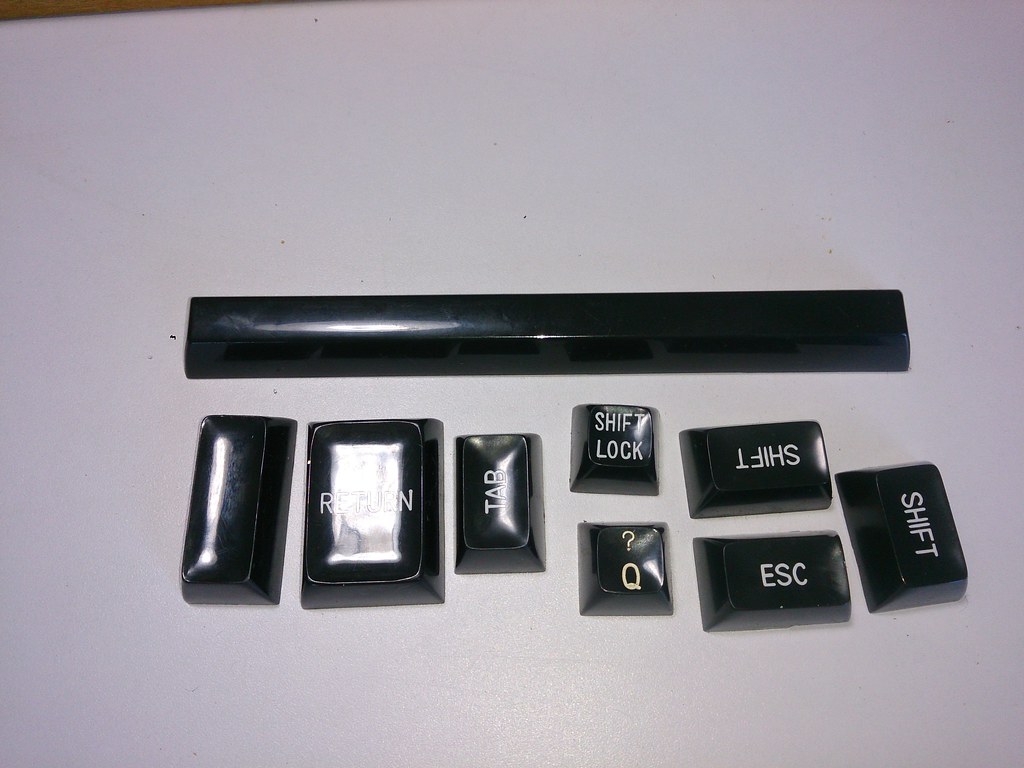
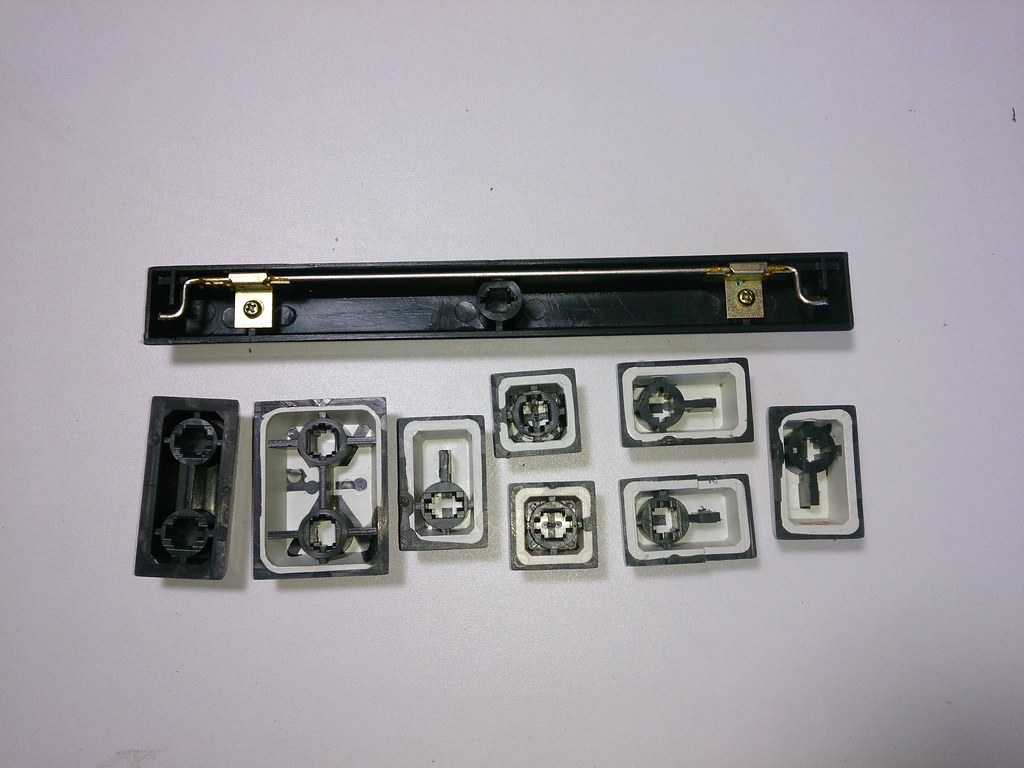
"Real" Keycaps
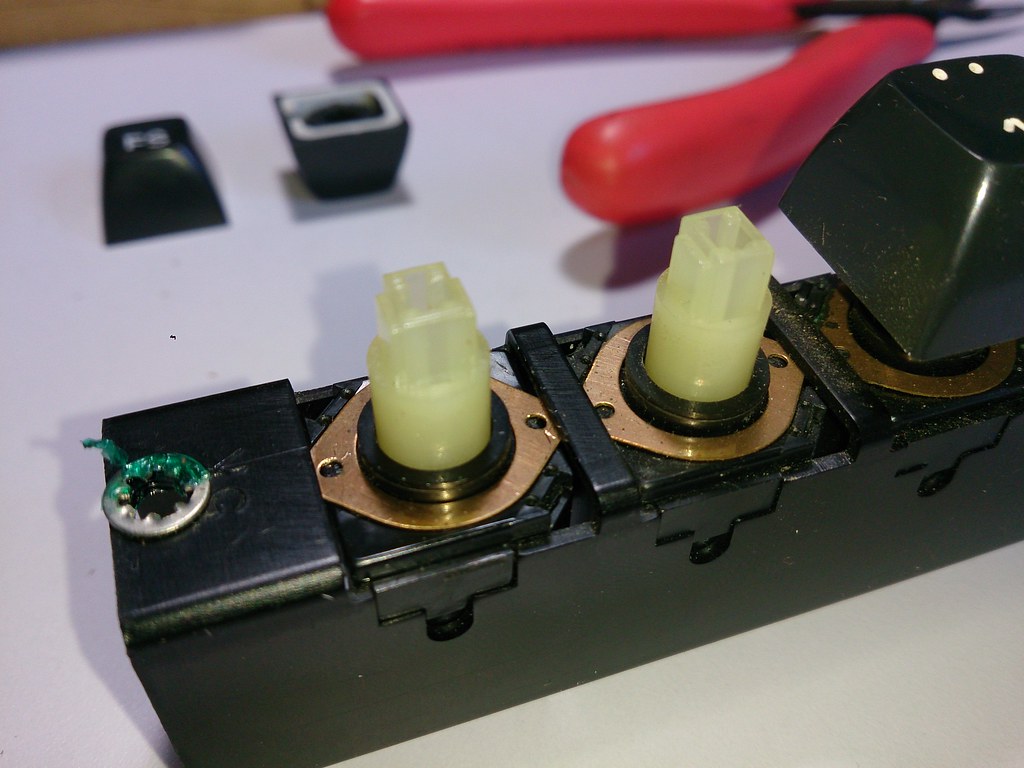




Mounting brackets
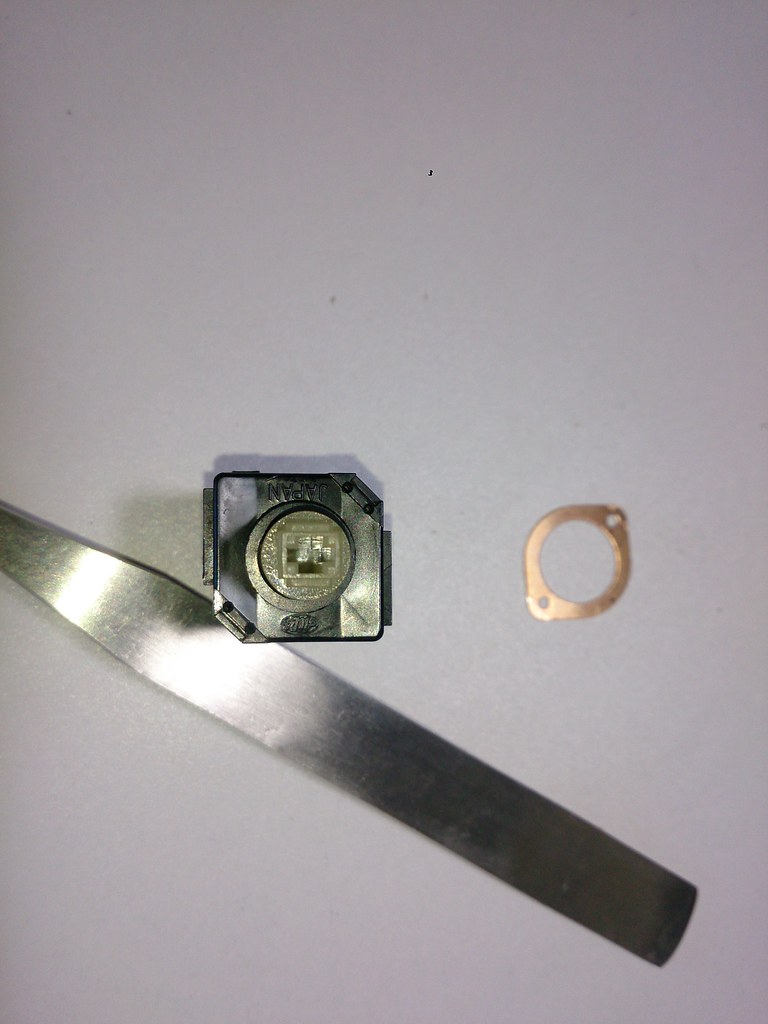


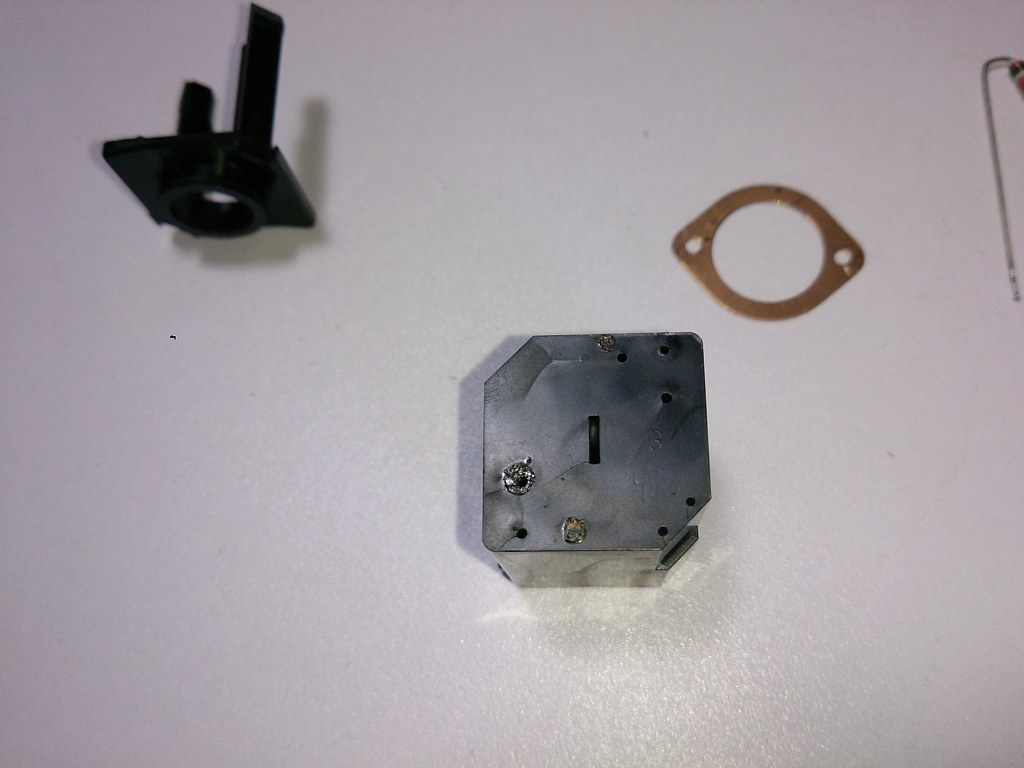







The switch
Notice the rubber stopper on the slider, suppresses the rebound noise (inverse O-Rings if you will). And the bottom where the spring attaches is also rubber, suppressing bottom out noise.
The red glue is covering the magnet (very pretty looking for keyswitch magnets which are often sloppily cut).
Not sure of the plastic of the slider/housing but it is very very smooth (not quite UHMWPE though
Contains a diode and magnetic reed switch (blueish tube).
The copper ring is the plate securing spring (keeps the switch extremely secure, and takes a bit of practice to get them in and out easily).
And the crappy industrial switches...

Full Album -> http://www.flickr.com/photos/triplehaat ... 545864692/
Sorry, couldn't find any patents. Mind, outside of the plastic choice, slider design, and rubber placement there isn't much to patent as reed switches weren't new...
I'll post a video this evening if there is interest.
More keyboard pics sometime this week